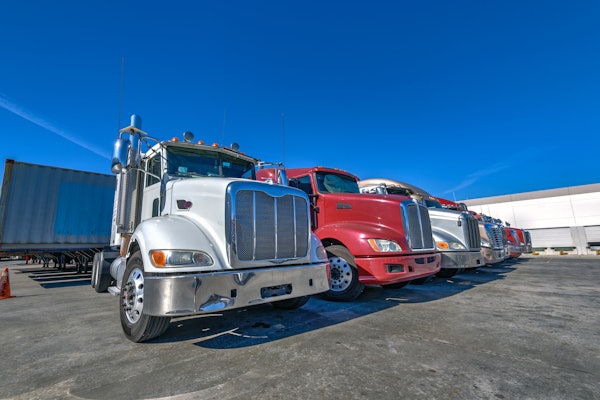The ports of Long Beach and Los Angeles on Thursday, April 12, held the inaugural meeting of a stakeholder group to gather input on a proposed Clean Trucks Program intended to reduce air pollution from harbor trucks by more than 80 percent within five years.
The diverse 24-member stakeholder group, which is assisting with the implementation of the ports’ Clean Air Action Plan, is comprised of six environmental, six business, three government, six labor and three academic leaders. The Clean Trucks Program is outlined in the Clean Air Action Plan, and will be administered jointly by the ports of Long Beach and Los Angeles. The staffs of both ports are refining the program, with stakeholder input.
A plan is expected to be presented to the harbor commissions of both ports before July. “Diesel-powered harbor trucks are a major source of air pollution that absolutely must be cleaned up,” says Long Beach Harbor Commission President James C. Hankla. “This is one of our most daunting challenges, and I’m confident that this diverse, knowledgeable task force will help us find the best solutions.”
Los Angeles Harbor Commission President S. David Freeman says “I’m very pleased that both ports are moving forward to meet with our stakeholder representatives and advance a critical initiative that tackles the largest and most challenging component of our Clean Air Action Plan — a solution for bringing cleaner trucks and a stable and secure work force into our ports.”
The Clean Air Action Plan calls for drayage truck owners to scrap and replace the oldest of about 16,000 trucks working at the ports, and retrofit the others, with the assistance of a port-sponsored grant subsidy. “Under ordinary use, a diesel truck can be operated for many decades,” Port of Long Beach Executive Director Richard Steinke says. “We need to find fair, equitable solutions that will accomplish our shared goals of moving cargo efficiently and securely, while improving air quality and reducing health risks.”
“Our ports have received a number of suggestions on our truck program, and we have developed a concept based on input to date and additional research that staff has conducted,” says Port of Los Angeles Executive Director Geraldine Knatz, Ph.D. “In the course of the next month or two, I’m confident that we can finalize a plan that will help significantly reduce the air pollution impact of drayage trucks for the benefit of everyone who lives in Southern California.”
The program under development by the port staffs would only allow port-licensed concessionaires, operating “clean trucks,” to enter port terminals without having to pay a new truck impact gate fee. Port-licensed concessionaires that continue to work in the ports with older, more polluting trucks would be required to pay a truck impact gate fee.
“Clean trucks” are defined as 2007 or newer trucks, retrofitted trucks manufactured in 1994 or newer, or trucks that have been replaced through the Gateway Cities truck modernization program. The 2007 and newer trucks are 90 percent cleaner than older trucks. Year by year, the oldest trucks would be barred from the ports until only trucks meeting the CAAP “clean truck” standard would be permitted to work in the ports.
The ports of Long Beach and Los Angeles adopted the landmark San Pedro Bay Ports Clean Air Action Plan in November 2006 to curb port-related air pollution from trucks, ships, locomotives and other equipment by at least 45 percent in five years. A model for seaports around the world, the CAAP consists of wide-reaching measures to significantly reduce air emissions and health risks while allowing for the development of much-needed port efficiency projects.









